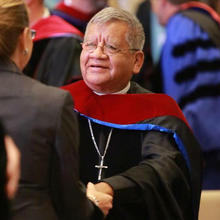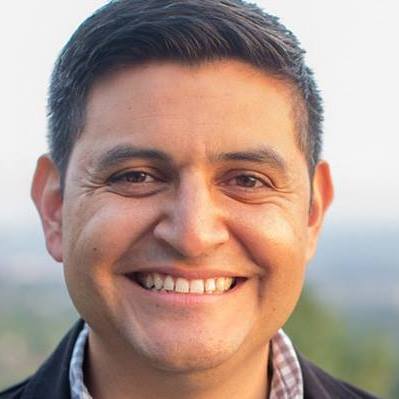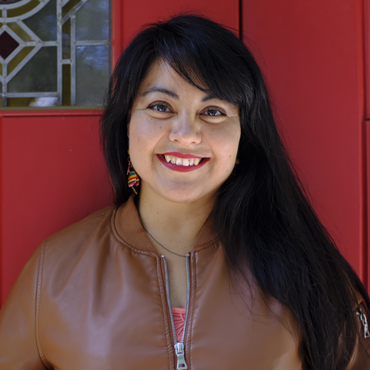Growing a Brighter Tomorrow in Gulfton, 2018, Rahmaan Statik
Read the summary and find links to the other 3 keys.
Key 2: Bring Others Alongside

Rev. Alejandro Montes: The shift in perspective towards the youth in our community could not remain only within myself and my family; I had to find ways of bringing the congregation along. By this point, tensions had grown between the congregation and the youth in the community after several incidents, which included the murder of two young people from our congregation. Although I encouraged the congregation to be open to receiving the young people in the community, they were justifiably opposed to it. So I began the process of reconciliation by holding a special event where I invited the evangelist Nicky Cruz, a former gang leader, to speak to the congregation and share his testimony. This was followed by a series of nights of open conversations with the congregation where we dialogued about their concerns and the need to be an open and safe space for the youth in the community and their families. The process took some time, as change is gradual; however, because they saw my example of sincerity, openness, and interest in the well-being of both the congregation and the community, the congregation opened up to welcoming the youth from the community.
In time, the youth in the community felt comfortable joining the congregation and both learned how to trust each other and be open to one another. The church became a place where young people could come to receive help with homework, eat meals, have fun, and feel safe. This gave way to young people being directly involved with making these things happen. They would take the lead in organizing activities for the youth in the community, and they taught us as a congregation to listen to their needs and make the necessary accommodations – such as changing most activities from Saturdays to Wednesdays, as this did not interfere with their weekend jobs and family responsibilities.

Priscilla Rodriquez: Shifting one’s thinking can only make a limited impact if one doesn’t bring the entire congregation along. The church needs to always be a multigenerational space. There needs to be balance to avoid the alienation of any age group in the congregation. To reach this ideal, it all starts at the top. The pastor must set the tone and example for the congregation and be open to change. Issues of integration and inclusion must be addressed through the sermons and times of biblical teaching. There also needs to be an intentional effort in finding ways for youth to be gradually involved in hands-on activities, such as guiding worship and other key activities in the church.
Our pastor is very light-spirited, authentic, likes to have fun, breaks down the perceived distance, and takes time to be present at youth’s activities. He does it in such a way that the youth don’t feel like he is there supervising them, but rather shows them that he genuinely enjoys spending time with them. The pastor and his wife have nurtured an environment of trust, warmth, love, and sincere concern for the lives of others – this is reflected in how the entire congregation interacts with one another. Young kids like sitting at the very front of the sanctuary to be close to everything that is taking place at the podium, senior adults are intentional about taking time to greet young people and ask them about their school or work, and the entire congregation participates in intergenerational events and programs where closer relationships and camaraderie are built. This is how our congregation has nurtured a sense of shared vision and direction so that we are all working together towards the same goals and we all know each other and take care of one another.

Marcos Canales: To bring others alongside requires a shift toward a distributive leadership model. In our congregation we do not pretend that we follow an even plane, flat, or non-hierarchical leadership model. We acknowledge that the members of the congregation differ in their skills, spiritual gifts, education, spiritual maturity, and level of experience, as well as their cultural and socioeconomic backgrounds. As pastor, it is my task to ensure that the leadership team doesn’t become “Marcos y sus amigos” (Marcos and his buddies), but rather a team that has been entrusted with a high responsibility. We are aware of our power, we constantly assess it, and we are intentional about seeking ways to distribute that power to enable others to do. I am aware of the leadership models our Latino culture has perpetuated in church: either authoritarian and manipulative, or guilt-based and sacrificial service. Thus, many youth in our congregation tend to approach me and say: “Pastor, just tell me what to do.” Following a distributive leadership style means that I have to be intentional about walking alongside of those youth, and first help them recognize themselves as someone who has been called, and then help them discover the specifics of what is God calling them to do. It takes constant communication and providing them with a constellation of mentors to shepherd them during the process of discovery.

Anyra Cano: To help bring young people and adults alongside of this perspective in ministry, I have to do work on both fronts. With young people I have to do the work of empowerment and mentoring. They need to be able to see themselves as part of all aspects of church life. So, some of the efforts include doing spiritual gifts assessments together so that they can learn how God has equipped them to serve the church and community. We then mentor youth to grow in those spiritual gifts, help them find hands-on opportunities to put those into use, and help them become who they were designed to be. We also do brainstorming sessions where we speak freely about what they would like to see more of, or less of, taking place in the church, followed by how they can get involved to make it happen. We nurture a sense of ownership versus attendance. As a result, about 80% of the youth in our church are serving in one way or another, the younger kids are eager to reach the age when they too can be part of the youth group, and the college students who have moved away are serving in their new congregations.
With the adults, the work I have to do entails helping them understand that the goal of youth ministry is not to babysit teenagers and keep them busy, but it is to invest time in developing and mentoring them. Our pastor is intentional about believing, affirming, and practicing ways in which to develop youth as leaders as well, so this makes a difference in the leadership team moving in the same direction. Together we teach the congregation to embrace a different approach to youth, especially since the majority are new in their faith and are learning what church is all about. We know parents are often frustrated with their teens and cannot see them as leaders, so we often hold workshops with parents where we encourage them, hold honest conversations, and debrief. We want to help parents discover more about their teens as people. We have times of reflection where we share positive stories of what we all observe when young people are serving and ask them questions such as: how did it benefit others/the church?; what did the young person learn?; etc.

Noemi Vega: Stories need to be told, there are congregations and organizations who are mentoring youth and empowering them for leadership, and we need to learn from them. Shifting perspectives and bringing others alongside becomes easier when people have the opportunity to see firsthand examples of how this work can be accomplished. Taking key stakeholders to site visits, letting them ask questions, and interacting with young leaders provides them with tools and ideas that they too can implement in their contexts. Another way to bridge the gap is by putting leaders in situations where they find themselves not having the answers to resolve an issue – for example, an issue that requires technology or social media to reach the community. This then provides an opportunity for a seasoned leader and a young leader to work together, in a situation where the young leader can teach and take the lead.
Bringing others alongside also entails the youth. They need to know that they have a voice and that we want to hear their ideas. It is important to create safe spaces where they can express themselves and also where young people can have a seat at the table as stakeholders and partake in responsibilities such as being part of church committees and boards. This needs to be done in a holistic manner though, as to avoid creating situations where youth are working so much that they feel burned-out and used. There needs to be a balance between work and caring for them through efforts such as spiritual retreats and leadership development events.

Obed Arango Hisijara: Bringing others alongside requires a shift in ethos and praxis. If we continue to view the church as a place for programs where others come and participate, if leadership is conceptualized as one person telling others what to do, it then becomes a matter of thinking of ways of “bringing others along”. Rather, through dialogical practices, the community has the freedom and the responsibility to sit together and express their needs, interests, and challenges, with the aim of proposing their solutions and making a commitment to carry those out en conjunto (together as one). When the community has the agency and empowerment to build what works for them, then there is no need to promote buy-in, for the solutions come as a result of what defines them and moves them. The community already possesses the knowledge and abilities required to bring solutions; as leaders, our role is to simply make a way to enable them for action.
Engaging in dialogue for construction is not a matter of a one-time retreat, meeting or course. This is a way of leading and building which cannot be sporadic; it needs to be intentional, constant, and taking place daily as the work is being built—it has no end. It is not simply dialogue for the sake of dialogue without practical and concrete actions, and it entails knowing the why of everything that is carried out. Reflection without action ends up in empty discourse; actions without reflection end up in domination. As solutions are built, space needs to be made for focus groups, brainstorming, and asking the hard questions – What works? What needs to stop? For this to be the ideal place, what would need to happen here? What are you willing to contribute towards the efforts? It also requires patience. Dialogues and walking together as one takes time. The solutions and commitments don’t often arise quickly, and this is simply part of the process one must be willing to embrace. It takes a willingness to carry out the solutions that arise in consensus from the dialogues without restricting or questioning them. There needs to be room for things to play out first, and then evaluated by all to determine if it needs to continue, be amended, or stopped. These are the kind of spaces that provide a way for people of all ages to grow and exercise leadership.
Continue reading about Key 3: Find Room to Speak about Challenges, Problems, and Sin

